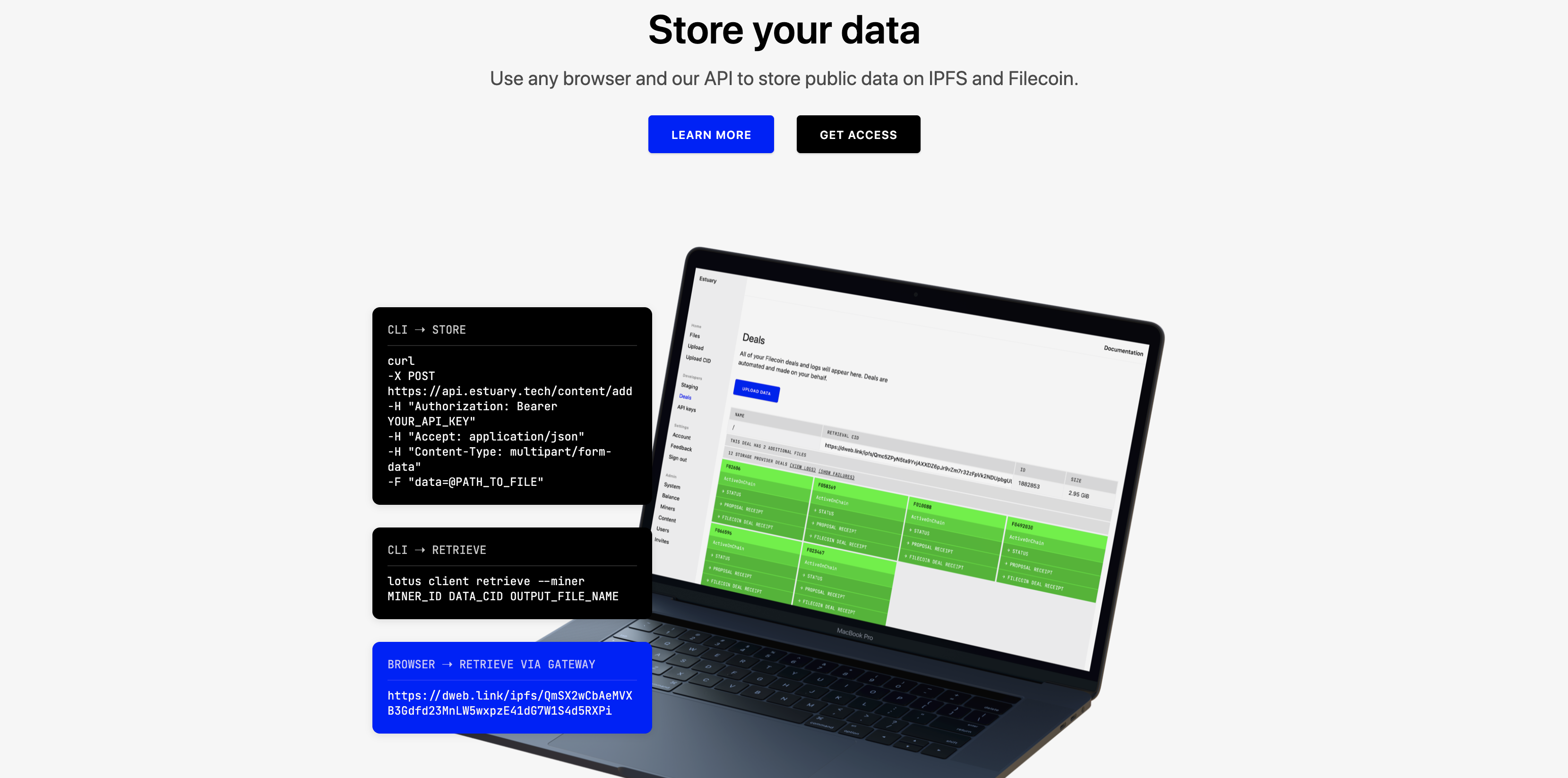Since the mainnet launch 11 months ago, the popularity of the Filecoin network has continued to climb,The storage capacity of the whole network has successfully crossed the 10EiB mark, according to its official website, 10EiB is equivalent to190 Internet Archives、oror6.85 million years of video callscapacity size.
Earlier, Filecoin released a storage system for Web3, Web3.storage, which provided users with an excellent opportunity to store and retrieve data on the IPFS network for free. Recently, Blue Shell Cloud Storage learned that Protocol Labs (Protocol Labs) ) also introduced another namedEstuarystorage system, users can take this systemSend massive amounts of high-quality public data to the Filecoin network, so as to ultimately serve the public interest.

What exactly is an Estuary?
Estuary is made up ofProtocol Labs ARG Group(Application Research Group) brings a new set of storage system, its main goal is to create a new storage method, so as to be able toAllow users to conveniently send massive amounts of high-quality public data to the Filecoin network.
Unlike Web3.storage, which is available to everyone,Estuary is open to users only by invitation.Since the public data stored in Estuary can be retrieved by users holding CID anytime and anywhere, users who want to conduct Filecoin storage transactions through Estuary must apply to its official website, so thatEnsure that the data sets submitted by users are valuable and can meet certain quality standards.Users who have received the invitation can set up their own Estuary account through the invitation code, and then can easily access and use Estuary through the GUI graphical interface or directly using the code through the API.
Data sent by users can be stored in Estuary nodes operated by ARG, or any Estuary nodes operated by developers or network operators. Estuary can follow the IPFS file persistent storage standard and implement file persistence in IPFS through CID Storage (pin) operations, as well as automated storage transactions with storage providers in the Filecoin network, are important components of a decentralized storage system.
So far, Estuary users have uploadedOver 8.7 million files, successfully17,000 storage transactions、as well asas well asBackup 146TiB data in Filecoin. Blue Shell Cloud Storage understands that currently all data uploaded via HTTP or CURL is sent to the Estuary node in North America, but more regions will be gradually opened in the future.

What Makes the Estuary Unique
Estuary provides a way for people to use the Filecoin network conveniently. As a distributed storage network of web3, Filecoin naturally has many new features compared to traditional cloud storage providers. For example, traditional centralized cloud storage controls the central server and holds most of the user data, whileEstuary users can run their own nodes and add storage capacity to the Filecoin network themselves.
In addition, Estuary'sstorage feeIt is also not fixed and not controlled by a single company. Instead, it provides aopen market, the price of storing and retrieving data will be determined by the market itself, and everyone can participate in it. Each Estuary node operator has its own Filecoin address, through which it pays its users' Filecoin storage transactions. The specific storage price will vary depending on the Filecoin storage counterparty selected by the Estuary node operator.
transparencytransparencyIt is beyond the reach of traditional cloud storage. Everything related to Filecoin remains completely open source, and the ecology of Filecoin is growing further every day.
With the influx of massive high-quality public datasets and growing popularity, Blue Shell Cloud Storage believes that Estuary will further help Filecoin to prosper.



